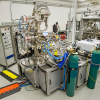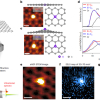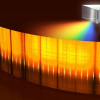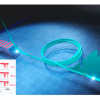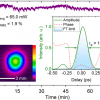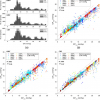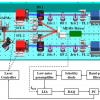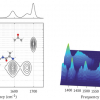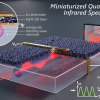Infrared Spectroscopy News
Hamamatsu Photonics, a global leader in photonics technology, is proud to announce its 70th anniversary, marking seven decades of achievements and contributions to the world of photonics.
Photonis has signed a definitive agreement to acquire Telops, developer and manufacturer of hyperspectral imaging systems and infrared cameras.
Quantum Design UK and Ireland are celebrating 23 years of Spectroscopic Ellipsometry workshops with their partner, J.A. Woollam.
Using advanced in situ spectroscopy techniques, scientists at Binghamton University and Brookhaven Lab gain new insights into catalytic oxidation.
Researchers have pushed the sensitivity of single-atom vibrational spectroscopy to the chemical-bonding-configuration extreme, which is critical for understanding the correlation of lattice vibrational properties with local atomic configurations in materials.
A new method overcomes the resolution-bandwidth limit in chip-scale spectrometry. The proposed scheme is based on a pair of identical tuneable micro-ring resonators.
The new design uses dual-comb spectroscopy.
This ultrafast infrared spectroscopy method would fulfil many unmet needs in experimental molecular science, revealing various high-speed phenomena in detail.
The IRDG’s two student travel awards are now open for applications: the Chalmers & Dent Student Travel Award and the Francis Dunstan Travel Awards.
The πNIRS technique could revolutionise medical diagnostics, including monitoring of strokes and Alzheimer’s disease.
NTU Singapore has launched the S$160 million Institute for Digital Molecular Analytics and Science, which aims to advance the science behind analysing biomolecules through the use of information technology and data science.
A team from Carnegie Mellon University have developed methods using NIR and diffuse correlation spectroscopies to monitor intracranial pressure non-invasively.
A new light source generates ultrashort infrared pulses at wavelengths around 12 µm with previously unattained peak intensity and stability. First experiments in vibrational spectroscopy on water demonstrate the high potential of the system for applications.
IR s-SNOM has shown that the layer between the wood and varnish of two Stradivarius violins contained protein-based compounds, congregating in nano-sized patches.
A novel algorithm estimates intracranial pressure based on haemoglobin levels using near infrared spectroscopic cardiac pulse waveforms.
A research team has developed a new type of spectrometer which is capable of simultaneous remote sensing of atmospheric methane, water vapor and nitrous oxide.
A new study has compared three different illumination systems for moisture prediction using hyperspectral imaging in the visible-near infrared range.
Large-scale, chemical-specific emissions information poised to aid development of greener airplane engines and fuels.
Infrared Diffusion-Ordered Spectroscopy separates molecules with different sizes into distinct sets of infrared peaks.
A proof-of-concept miniaturised Fourier-transform waveguide spectrometer that incorporates a sub-wavelength photodetector as a light sensor has been built.



